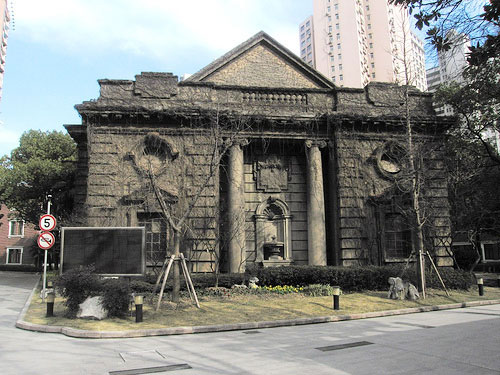
The Ohel Rachel Synagogue marked the culminating achievement of Shanghai's First Wave of Jewish immigrants. It was built to accommodate the community of Baghdadi Jews (which at its peak numbered 700), opened in March 1920, and was consecrated by Rabbi W. Hirsch for worship on January 23, 1921.
An imposing building, the Ohel Rachel Synagogue held up to 700
people in its cavernous sanctuary. Marble pillars flanked a walk-in ark (which
once held 30 Torah scrolls) and wide balconies overlooked the sanctuary. The
site hosted the Shanghai Jewish School (the 1932 building still stands on the
left of the courtyard), a playground, library and mikveh. It was located on
Seymour Road (now 500 North Shaanxi Road) and styled after the Spanish and
Portuguese Bevis Marks (1701) and Lauderdale Road Synagogues (1896) in
London.
Sir Jacob Elias Sassoon - a Sephardic Baghdadi Jew - endowed the
Synagogue in loving memory of his wife Lady Rachel. When Sir Jacob died a few
months prior to the Synagogue's completion, the Jewish community decided to
dedicate it to both Sir Jacob and his wife. Sir Jacob had also endowed Hong
Kong's Ohel Leah Synagogue, dedicated to his mother, consecrated in 1900.
Today and for the future, the Ohel Rachel Synagogue remains the
most significant symbol of the crucial Jewish role in Shanghai's history. Ohel
Rachel was the first of seven synagogues built in Shanghai, and only one of two
still standing Today. The other, the Ohel Moishe Synagogue located in Hong Kou
district, hosts a museum dedicated to the history of the Jewish experience in
Shanghai.
500 Shaanxi Bei Lu,Jing An District, near Beijing Xi Lu
